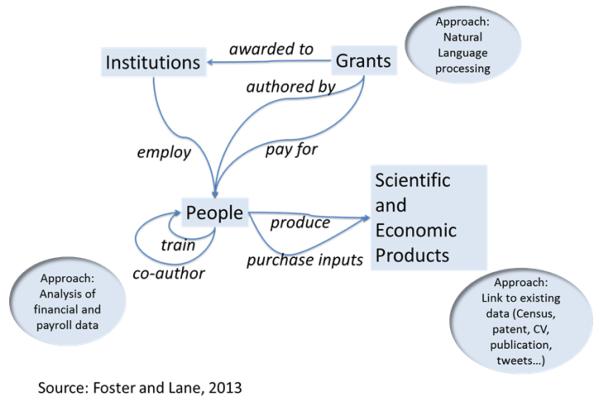Figure 1.
Figure 1 illustrates two key features of the framework we seek to elaborate. First, note that many different activities connect these nodes. Second, note that while grants are a key input, people, joined in networks and teams, are both the primary actors and objects of work. This set of insights underpins our contention that the next generation of analyses should derive from conceiving of the scientific enterprise in multi-level and potentially non-linear terms. The ecosystem of science, then, must be analyzed not simply in terms of counts or trends but also in terms of complex and often multiple relationships among diverse system components. We thus propose a data platform that begins with fine grained administrative data on grants but that anchors those on the careers of individuals nested within teams, intellectual trajectories, and institutions. The ability to shift analytic frames across levels of analysis and temporal scales is a key component of our effort.

